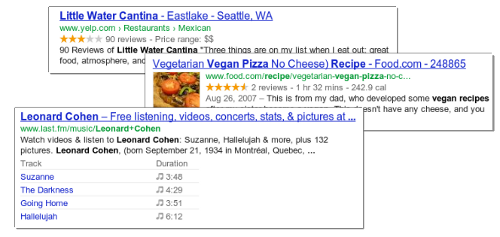
Quality information
Google create rich snippets automatically based on the markup. You should be careful of what content you want to mark up. The markup should be as relevant to the content of the page as possible. Make sure about that. It should also be up-to-date, and most importantly, it should be clearly visible to the readers when they open your page.
If the markup doesn’t appear to users, or is hidden, then it’s considered as spam by Google. The markups should not be spammy, or abusive, or even mis-leading, because you know Google is very strict on these things. Since Google generates the snippets algorithmically, it reserves the right to take manual action, and disable rich snippets for a particular website. So be ware of such shady practices.
Design
Make sure the markup is relevant. For example, if you are selling a product, then you should not add content about other products made by that manufacturer, or its competitors. If your page contains links to a source, then you can’t add mark-up related to that source. So strictly speaking, Google will only show snippets when the markup is closely related to the page’s content.
To ensure that Google displays your snippets, your markup should be up-to-date, because outdated content is of no use to users. Also, try to summarize the content of the webpage as best as possible, and give the user a fair image of what to expect from your page.
You can test your markups using the Structured data testing tool by Google. If snippets display properly in the test, then you’re good to go! If not, then you can refer to Google troubleshooting guide. Once done with the testing, sit back and relax! It’ll take some time before the snippets are displayed. If they still don’t get displayed, then check whether you are properly following Google’s guidelines. And again, refer to the troubleshooting guide. All the best 😀

thanku